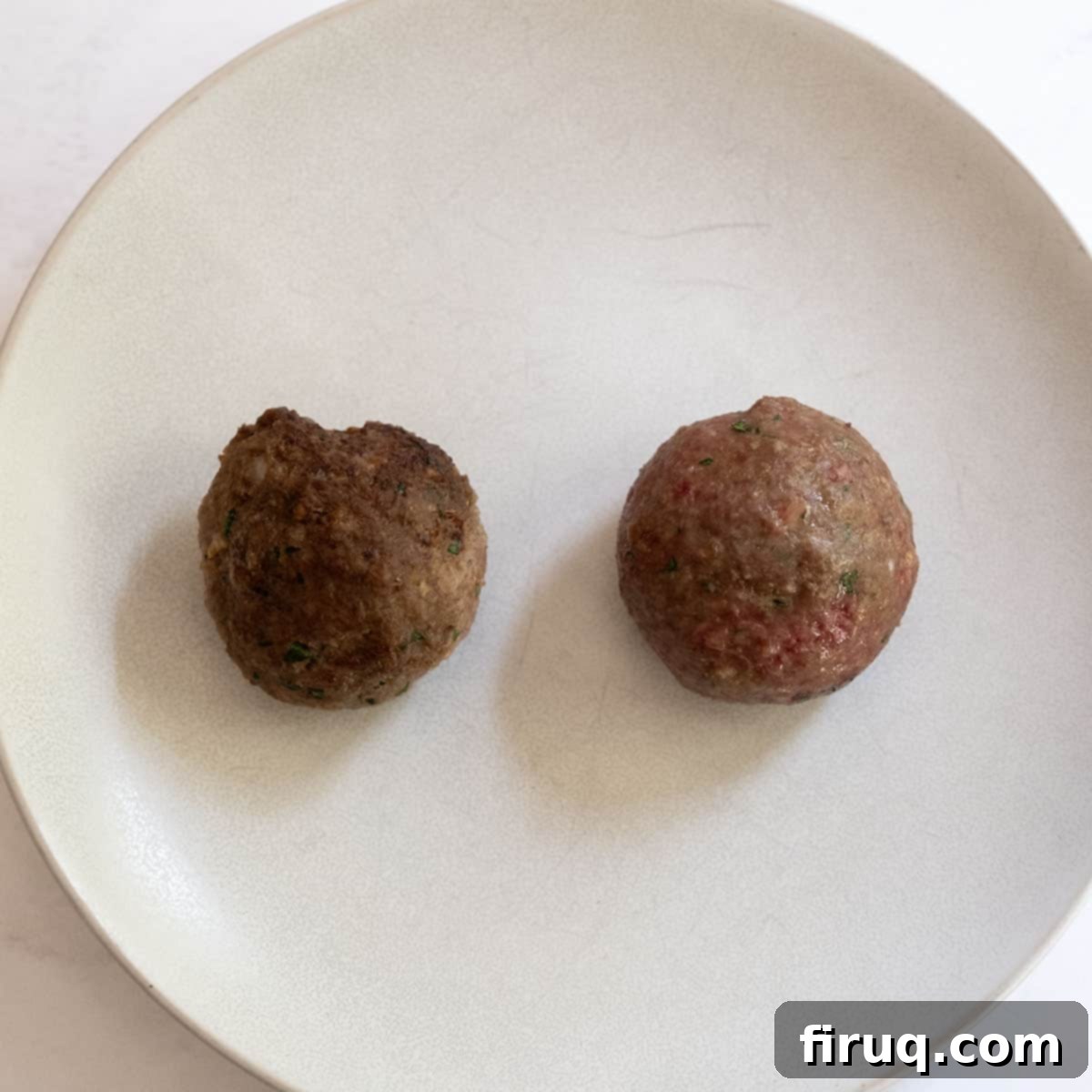Bake or Fry Meatballs: The Ultimate Showdown for Flavor, Texture, and Health
The timeless question for any home cook preparing delicious homemade meatballs: should you bake or fry them? Both methods promise mouth-watering results, but they offer distinct advantages and drawbacks in terms of taste, texture, health implications, and convenience. The “best” choice isn’t universal; it truly depends on your priorities for the meal, the number of meatballs you’re preparing, and your personal preferences. Let’s dive deep into this culinary debate to help you master your meatball game.
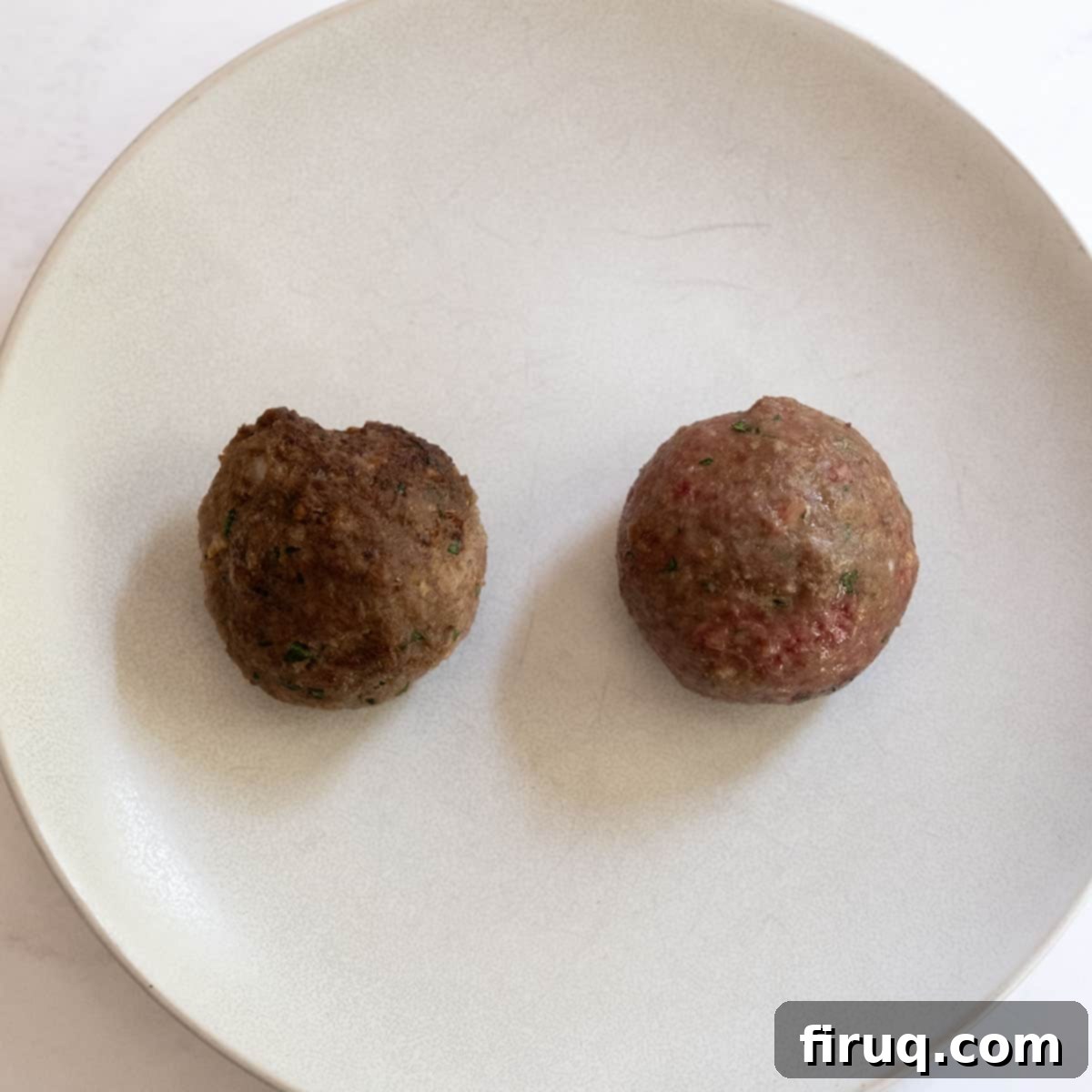
Before you commit to a cooking method, consider these crucial questions:
- Are you aiming for a lower-fat meatball option?
- How many meatballs are you cooking? Are you feeding a crowd or just a few?
- Do you prefer a specific texture – crispy exterior or uniformly tender?
- Is rich, complex flavor your top priority, or a more subtle, pure meat taste?
- Will your meatballs be finished by braising in a sauce, or served immediately after cooking?
Unlike identifying the best oil for frying chicken cutlets, which can have a definitive answer based on smoke point and flavor, the choice between baking and frying meatballs isn’t as straightforward. There isn’t a single “superior” method; instead, it’s about matching the technique to your desired outcome. Let’s break down the key differences.
Bake or Fry: Making Your Ultimate Meatball Decision
Ultimately, the choice between baking and frying your meatballs boils down to personal preference and the specific context of your meal. Some home cooks swear by the rich, savory depth that comes from pan-frying, while others champion the light, tender consistency of a baked meatball. While I personally lean towards the intensified flavor of fried meatballs, my decision often changes based on the occasion and the number of servings needed.
Growing up, our family dinners almost always featured baked meatballs. My mother, like many busy cooks, found it far more practical to prepare a large batch in the oven rather than meticulously pan-frying dozens of individual meatballs. Understanding the unique characteristics of each method will empower you to make an informed choice for your next batch of homemade meatballs.
Texture: Crispy Exterior vs. Melt-in-Your-Mouth Tenderness
The texture of your meatballs is profoundly influenced by the cooking method. This is one of the most noticeable differences and often a primary factor in deciding which technique to use.
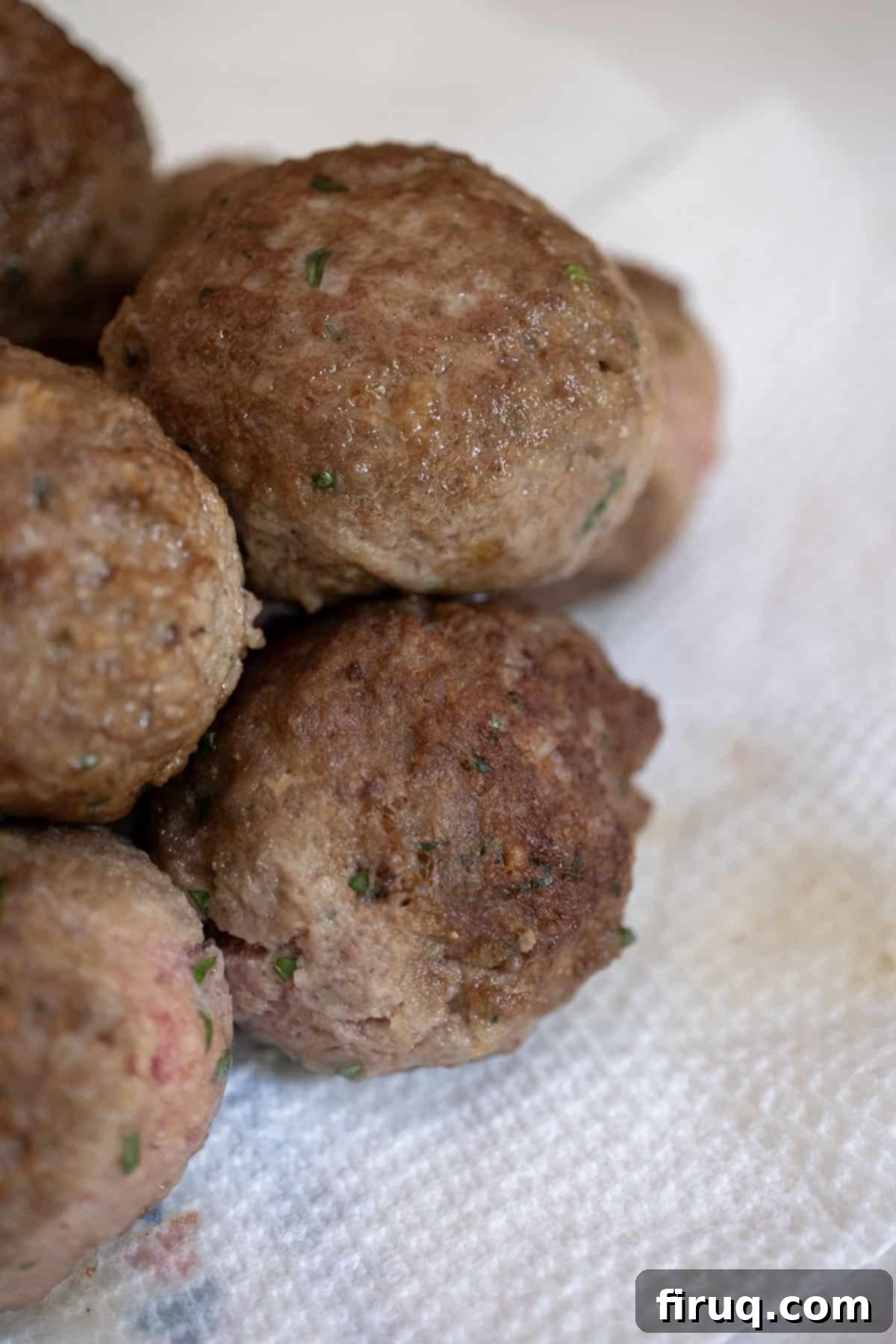
Pan-Fried Meatballs: The Crispy Crust
Pan-fried meatballs are renowned for developing a beautiful, savory brown crust. This desirable exterior is a direct result of the high heat and direct contact with oil in the frying pan. The crust not only adds a delightful textural contrast to the tender interior but also intensifies the flavor of the meatball itself through the Maillard reaction (more on this in the taste section). Furthermore, this process leaves behind delicious brown bits, or “fond,” on the bottom of the pan, which are a treasure trove of flavor. Deglazing the pan with a little liquid and incorporating these bits into your sauce will undoubtedly elevate its complexity and richness.
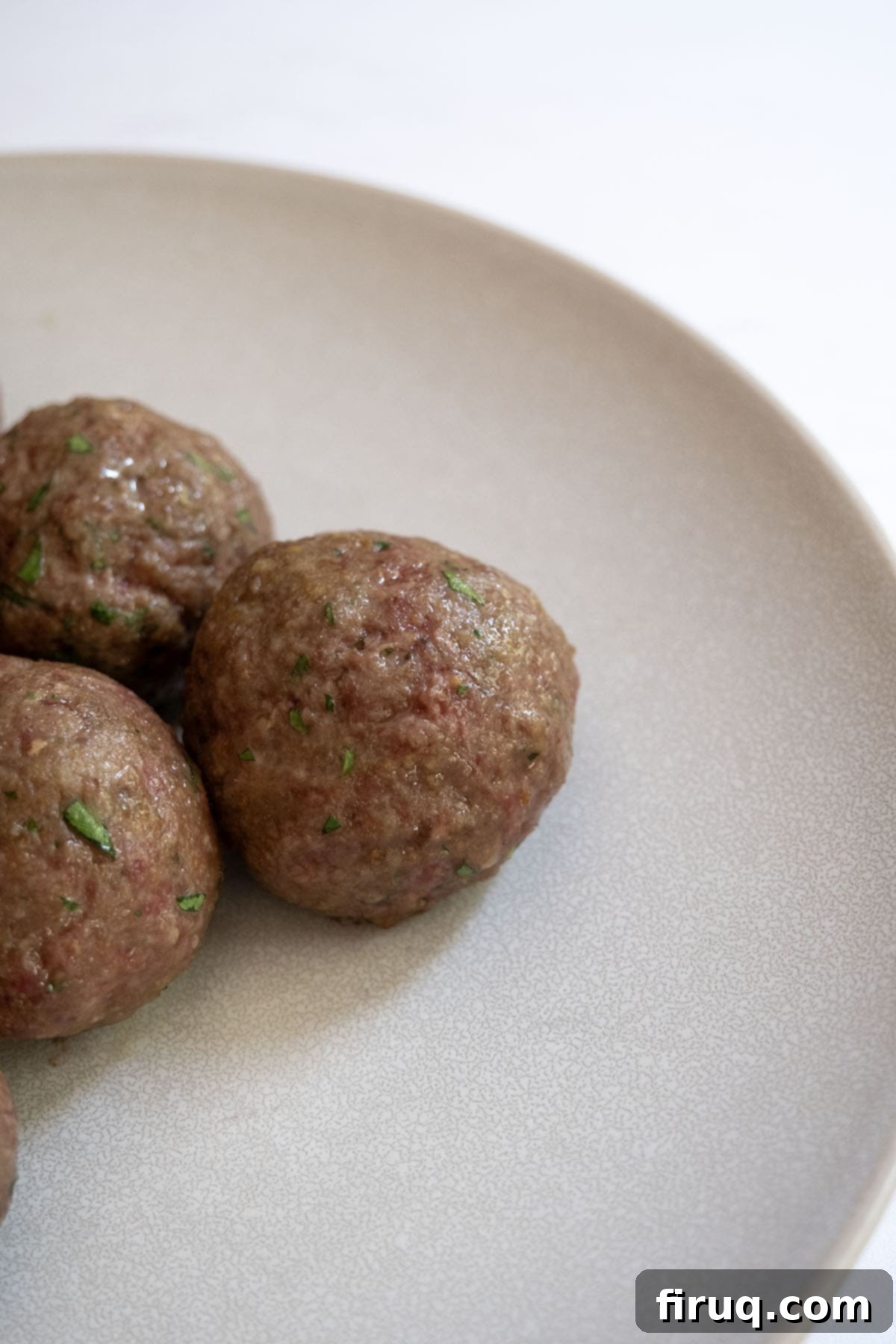
Baked Meatballs: Uniform Tenderness
In contrast, baked meatballs, as seen here, do not develop a crust in the same way. Instead, they achieve a wonderfully softer, more uniform exterior. The gentle, even heat of the oven cooks them through without the intense searing of direct pan contact. You might notice a slight pinkish hue, especially if you only par-bake them before finishing in sauce. This method results in meatballs that are tender throughout, offering a consistent, yielding bite that many find incredibly satisfying. This texture can be particularly desirable if you prefer meatballs that almost “melt in your mouth,” especially after simmering in a rich sauce.
While fried meatballs retain a slight crunch on the outside with a soft interior, baked meatballs maintain a consistent tenderness from edge to center. If you plan to simmer these meatballs extensively in a classic Italian Sunday sauce, both types will soften further. However, the baked variety will always retain that initial, melt-in-your-mouth quality, making them a preferred choice for those who prioritize extreme tenderness.
Taste: The Maillard Reaction vs. Pure Meat Flavor
When it comes to flavor, the distinction between baked and fried meatballs is quite pronounced. If all other ingredients are identical, the pan-fried version often wins in terms of depth and richness.
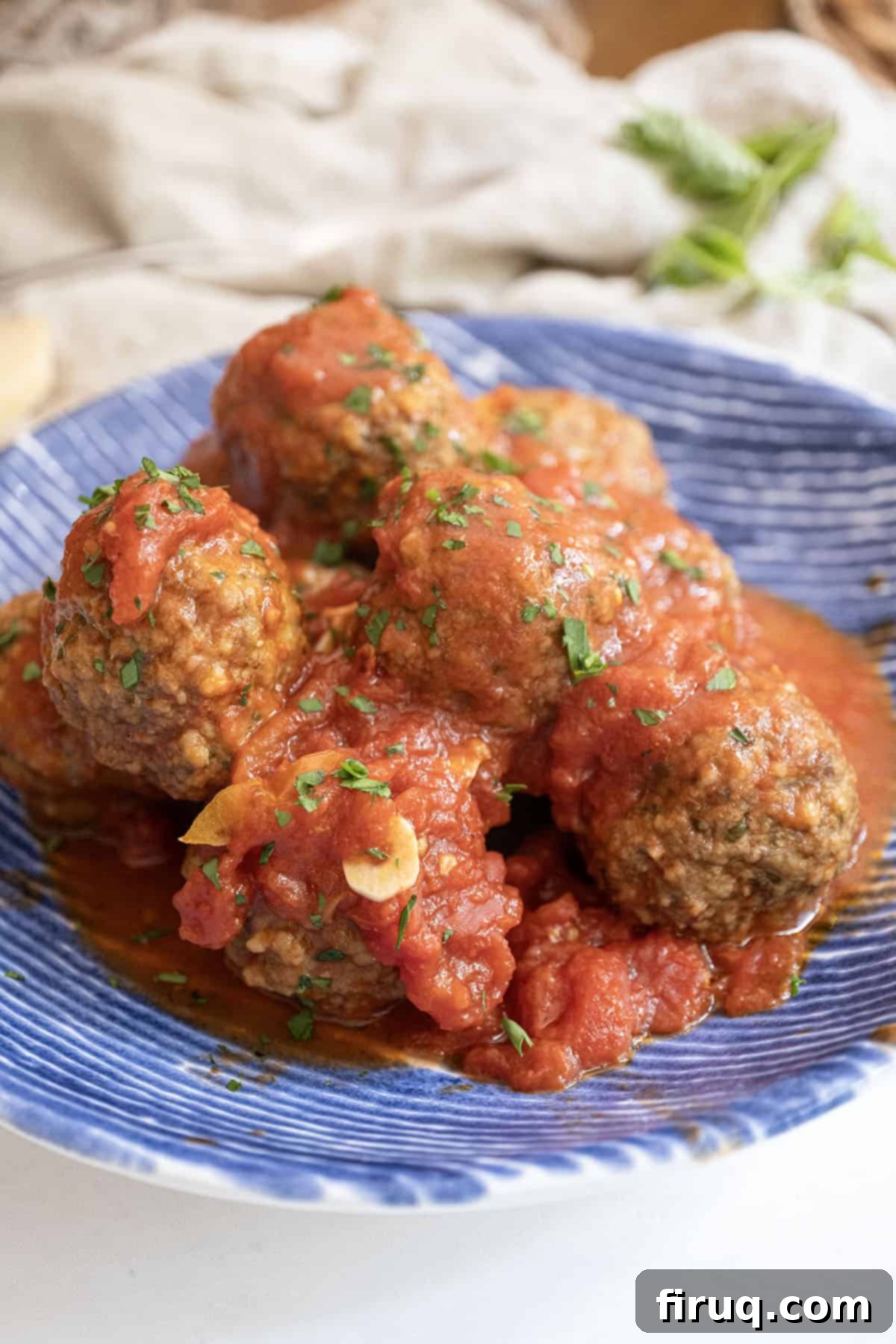
The Maillard Reaction: Flavor Unlocked by Frying
The secret to the superior flavor of fried meatballs lies in a chemical process known as the Maillard Reaction. This reaction occurs when amino acids and reducing sugars in the meat are exposed to high heat, creating hundreds of new flavor compounds. This process gives fried meat its characteristic savory, umami, and slightly roasted notes, transforming the surface into a rich, complex flavor profile that is simply unparalleled by baking.
The intense searing during frying develops a distinct, deep flavor that significantly enhances the meatball. If your primary goal is to achieve the richest, most complex flavor profile for your meatballs, then frying them will deliver every time. The browning adds a layer of deliciousness that baked meatballs, while still flavorful, cannot quite replicate.
Baked Meatballs: Subtler and Pure
Baked meatballs, on the other hand, offer a more subtle and pure meat flavor. Without the intense browning of the Maillard reaction, the natural taste of the meat and seasonings comes through more cleanly. This can be desirable for some, especially if the meatballs are destined for a heavily flavored sauce where you want the sauce to be the star, or if you prefer a less “cooked” flavor on the exterior of your meatball.
Fat Content: Making a Healthier Choice
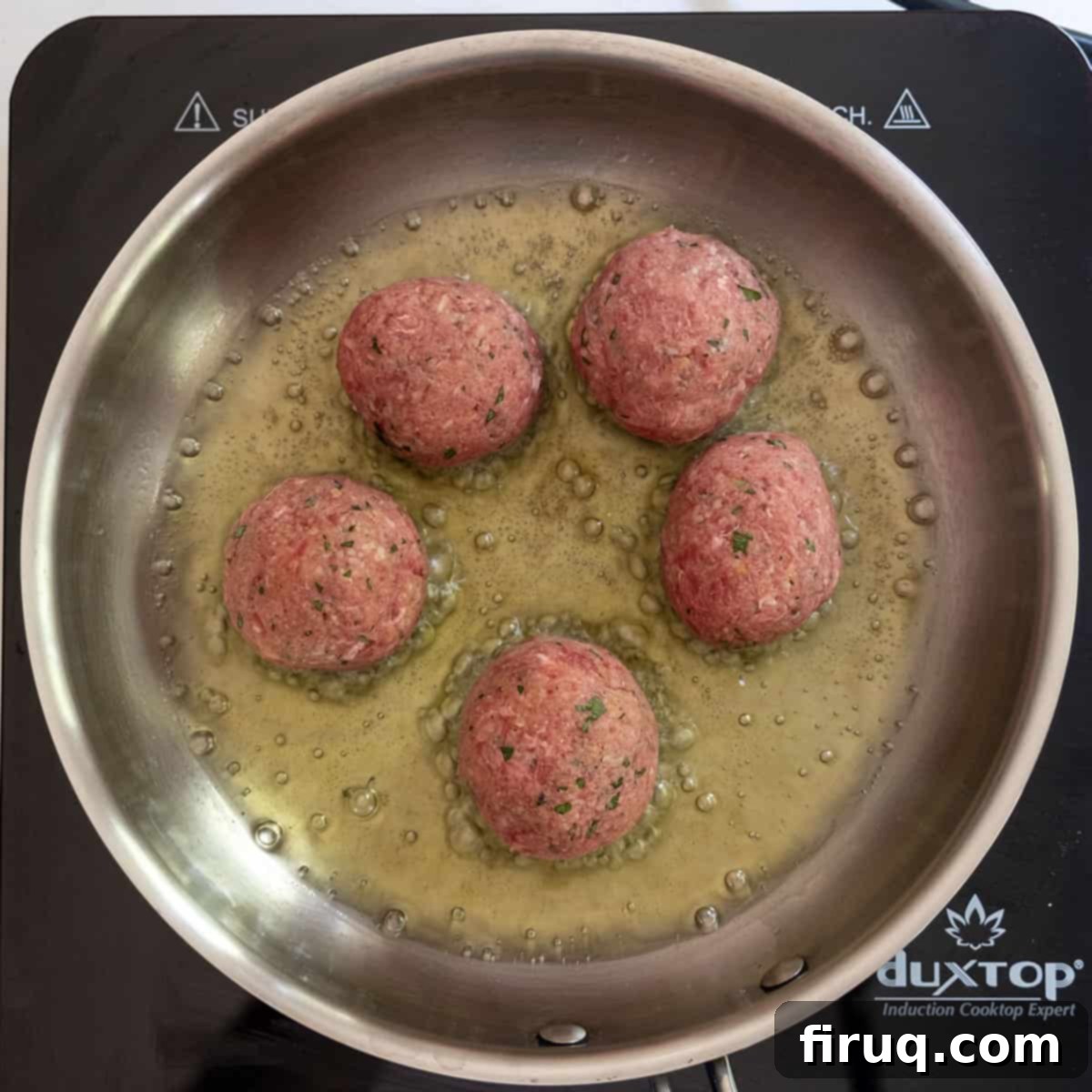
For those prioritizing a “healthier” meal, the fat content is a significant consideration. Frying inevitably involves a certain level of oil absorption, which contributes to the overall fat content of the final product. While terms like “healthy” are subjective and dependent on dietary needs, if your goal is to minimize added fats, then baking is the clear winner.
Even if you use a high-quality oil like olive oil – which is not inherently unhealthy – the process of frying means the meatballs will absorb some of that cooking fat. When baking, however, any excess fat from the meat itself will render out and drip onto the baking sheet, leaving you with a leaner meatball. For those conscious of fat intake, the baking route consistently yields a lighter option.
How Many Meatballs Do You Need? Convenience and Batch Cooking
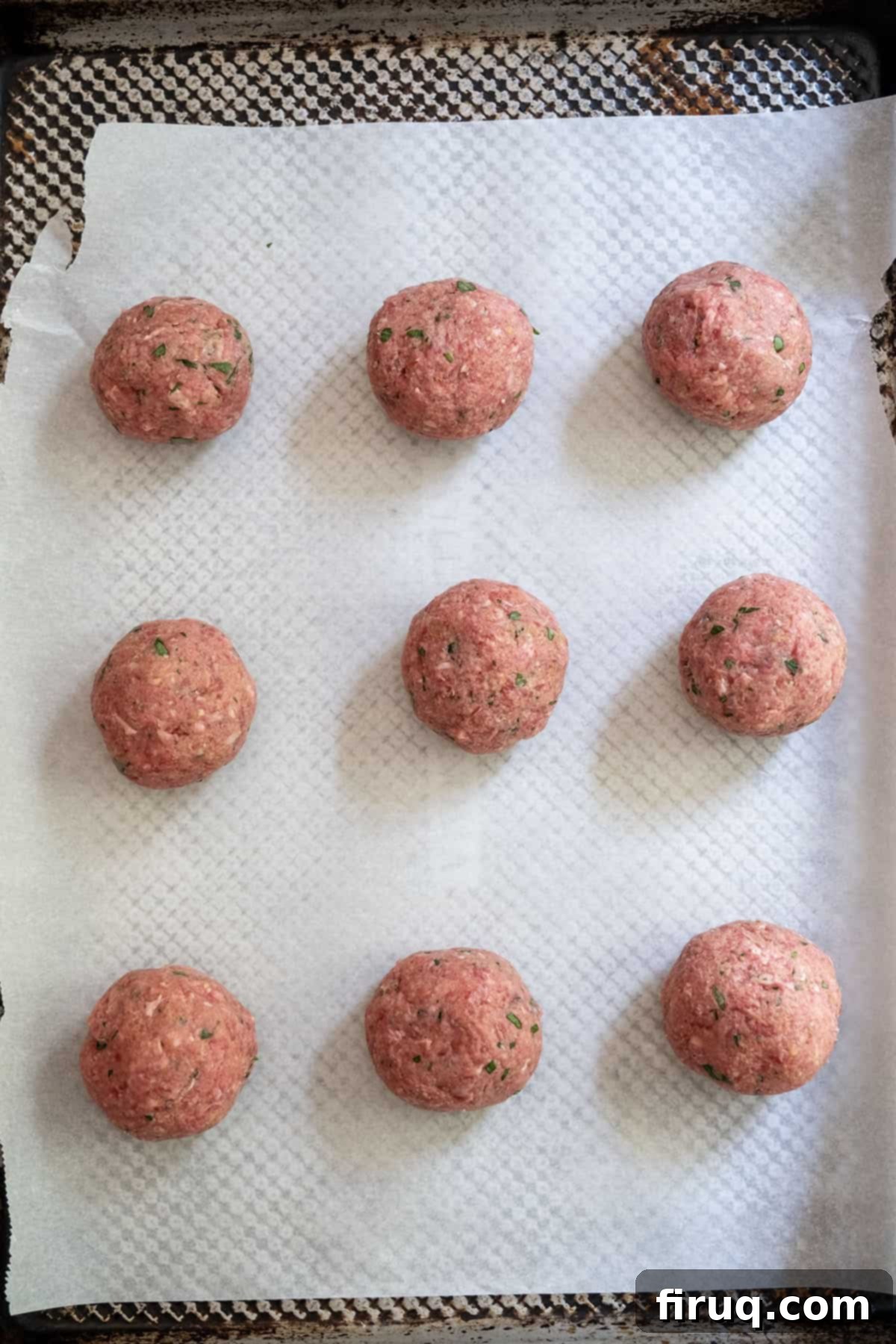
The scale of your cooking project is a major factor in determining the most practical method. If you’re preparing a large batch of meatballs for a family gathering, a holiday feast, or simply for meal prepping throughout the week, baking offers unparalleled efficiency.
Baking for Large Batches: The Time-Saving Choice
When cooking for a large group, baking significantly streamlines the process. You can easily arrange dozens of meatballs on one or two baking sheets and cook them simultaneously in the oven. This hands-off approach frees you from standing over a hot stove, constantly turning meatballs and managing oil splatter. It’s a massive time-saver and keeps your stovetop clear for other dishes, making it the king of convenience for quantity cooking.
Frying for Smaller Portions: Quick Flavor Boost
Conversely, if you’re only making a small handful of meatballs – perhaps for a quick meatball sub, a single serving of pasta, or a small weeknight dinner for one or two – frying becomes a highly appealing option. For these smaller quantities, the time commitment is minimal, and you reap the full benefits of that superior fried flavor without much effort. You can achieve perfectly browned meatballs in a single pan in just a few minutes, making it an excellent choice for when flavor is paramount and quantity is low.
The Hybrid Approach: Getting the Best of Both Worlds
Can’t decide between the crispy crust of frying and the convenience of baking? Many chefs and home cooks successfully employ a hybrid method to achieve the best attributes of both. This often involves a quick pan-sear followed by oven baking or simmering in sauce.
- Sear then Bake: Brown your meatballs quickly in a frying pan to develop that desirable Maillard crust and flavor, then transfer them to a baking sheet to finish cooking through in the oven. This is a great way to get a flavorful exterior without having to constantly monitor them during the full cooking process.
- Sear then Simmer: For traditional Italian meatballs, a common practice is to pan-fry them until beautifully browned (they don’t need to be cooked through), then immediately transfer them to a simmering pot of tomato sauce. They finish cooking gently in the sauce, absorbing its flavors while also infusing the sauce with their meaty richness and pan drippings.
This combined approach can be an excellent compromise, allowing you to enjoy the deep flavors of browning with the ease of oven-cooking or the moist tenderness of slow simmering.
Impact on Your Sauce: Richness from Fond or Clean Flavor
The way you cook your meatballs also subtly affects the flavor of any accompanying sauce.
- Fried Meatballs and Sauce: When you pan-fry meatballs, the process leaves behind flavorful “fond” – those browned bits of caramelized meat and drippings stuck to the bottom of the pan. This fond is a goldmine of flavor. If you build your sauce directly in that same pan, or deglaze it and add the liquid to your sauce, you infuse it with incredible depth and complexity. This is a cornerstone of many classic Italian meatball recipes, where the meatballs and their pan drippings are integral to the sauce’s rich character.
- Baked Meatballs and Sauce: Baked meatballs, because they don’t produce a significant amount of fond in the same way, will contribute a cleaner, more straightforward meat flavor to your sauce. The sauce’s flavor will rely more heavily on its own ingredients rather than being significantly altered by meat drippings. This isn’t a downside, simply a different profile, often resulting in a lighter-tasting sauce.
Making Your Choice: A Quick Guide to Perfect Meatballs
To help you decide which method is best for your specific needs, here’s a quick summary:
- Choose Frying If:
- Flavor is your absolute top priority and you crave that deep, rich Maillard reaction goodness.
- You desire a crispy, browned crust on your meatballs.
- You’re cooking a small batch for a quick meal or appetizer.
- You plan to use the pan drippings and fond to enrich your sauce.
- Choose Baking If:
- You’re looking for a lower-fat, potentially “healthier” option.
- You need to prepare a large quantity of meatballs with minimal hands-on effort.
- You prefer a uniformly tender, melt-in-your-mouth texture.
- You want to keep your kitchen cleaner (less oil splatter).
- You’re meal prepping and need a consistent, easy method.
No matter which method you choose, remember that the quality of your ingredients and how well you season your meatballs will always be fundamental to their deliciousness. Both baking and frying have their place in the culinary world, and mastering both techniques will make you a more versatile and confident cook.
Baking and Frying Meatballs FAQs
To fry meatballs, heat a layer of olive oil (or your preferred frying oil) in a heavy-bottomed pan, such as stainless steel or cast iron, over medium-high heat. Place meatballs in a single layer, ensuring not to overcrowd the pan. Fry, turning occasionally, until they are beautifully browned on all sides and cooked through (or par-fried if finishing in sauce). You can learn more about how to fry meatballs by following our Classic Italian Fried Meatballs recipe.
For baking, meatballs should typically be cooked in the oven at 350 degrees Fahrenheit (175°C) for 15-25 minutes, depending on their size. Always ensure they reach an internal temperature of 165 degrees F (74°C) for food safety.
Cooking meatballs on the stove usually refers to pan-frying. Heat oil in a pan, place meatballs, and cook for about 2-4 minutes per side, turning to brown evenly. The total cooking time depends on whether you’re cooking them all the way through or just browning them before simmering in sauce. For fully cooked meatballs, they should reach 165 degrees F (74°C).
If you’re par-frying meatballs before transferring them to sauce, aim for about 3-4 minutes total, browning each side for 30 seconds to a minute until a nice crust forms. If you’re frying them to be fully cooked and served directly, it might take 8-12 minutes total, depending on size, ensuring they reach 165 degrees F (74°C) internally.
Bake meatballs in the oven for 15-25 minutes at 350 degrees F (175°C). The exact time will vary based on the size of your meatballs; smaller meatballs will cook faster. Always use a meat thermometer to ensure they reach an internal temperature of 165 degrees F (74°C) for safe consumption.
Yes, air frying is an excellent method for cooking meatballs. It offers a crispy exterior similar to frying with less oil, similar to baking in terms of convenience. Preheat your air fryer to 375-400°F (190-200°C) and cook for 10-15 minutes, shaking the basket halfway through, until they are browned and reach an internal temperature of 165°F (74°C).
For classic, juicy meatballs, a blend of ground meats is often preferred, typically a mix of ground beef (80/20 for good fat content), pork, and sometimes veal. Using only lean ground beef can result in dry meatballs. The fat content is crucial for both flavor and moisture, regardless of whether you bake or fry.
To ensure your meatballs hold their shape, use a binder like breadcrumbs (often soaked in milk or water) and an egg. Avoid overmixing the meatball mixture, as this can make the meatballs tough. Also, ensure they are tightly rolled. If baking, don’t overcrowd the pan. If frying, ensure the oil is hot enough before adding them.
